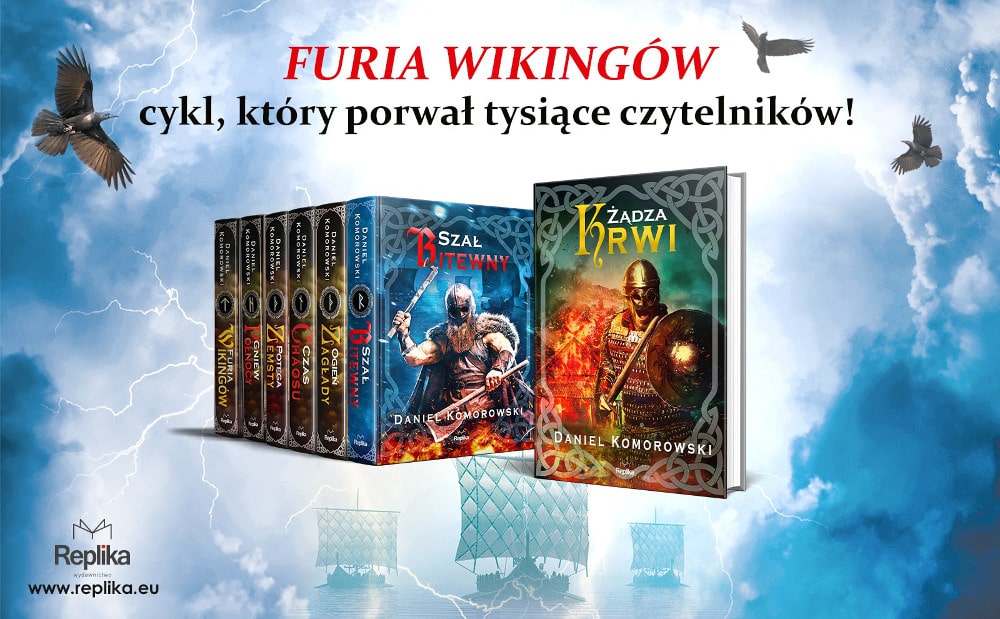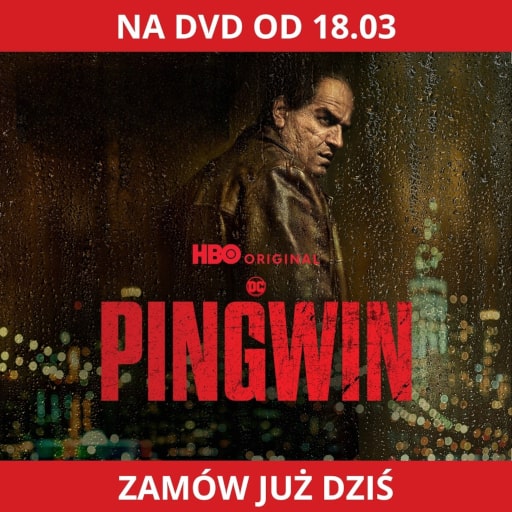The Last Tavern: They burned, raped, looted – this is the common image of the Vikings. Where and when did your passion for them originate?
Daniel Komorowski: I will not be original here. The passion was born while watching the TV series Vikings . I’ve always liked stories, especially the medieval period, and when I came across this series, I just lost it. I watched episode after episode, season after season, and so my interest grew until it grew to a size that influenced the decision to write a book.
OT: When and why did this interest turn into the idea of writing a novel?
DK: I was very fascinated by the world of the Vikings. Their beliefs and prowess and all. I read and watched everything related to them, and at some point in my head the question simply appeared: “What if I wrote about them?”. Work on the eighth volume of the series is completed, and I am also finalizing the first one that opens the sub-series from the events before the first volume, so I think that the decision to embark on the writing path was very good.
OT: The Viking Fury saga is coming to its finale – the seventh and penultimate volume of Bloodlust has already been released . Was it intended to be such an extensive, eight-volume series from the beginning?
DK: At first I was going to make four volumes, but that was before the first volume was released. After sending my material to the publishing house, it turned out to be so voluminous (over 900 book pages) that they preferred to divide it into two parts, because such a “brick” in the debut may scare off a potential reader a bit. At that time, I somehow had no idea how many sheets or pages of typescript, how many book pages, etc. However, it so happened that, more or less halfway through the book, I had the perfect moment for the aforementioned division, so there were no big problems with it. In this way, out of the planned four volumes, eight were created.
OT: Before reaching for the pen, did you have a well-thought-out outline of the whole thing and did you know how it would end? Or were the ideas born ad hoc, in the course of work?
DK: When I started writing, I had a rough outline. I knew what I wanted to achieve, what paths to assign to which characters, what big battles to play out, but that was just the rough draft. For each volume, I had main plots, main events, and before starting work on each subsequent volume, it was meticulously developed and the draft was refined. As a curiosity, I can reveal that from the very beginning I knew how I would end the series and even what words would appear in the finale.
OT: What was the hardest part of writing the saga?
DK: To be honest, there was no such thing. I have enjoyed writing from the very beginning. It is an incredibly pleasant and satisfying feeling to be able to build a world on the pages of a novel, to breathe life into the characters, to direct them. I really like developing books, planning all that. In Viking FuryAs readers know very well, there is a lot going on. If I had to find a problem at all costs, it would be … limiting the number of threads? Yes, there may be something to it. As I mentioned, there is a lot going on, and I wanted to fit even more, but I was afraid of “overdosing” and extending the series indefinitely. Among other things, I really wanted to show a number of lands where the Vikings came that I had not mentioned before, but in the end I gave up because it would have added several volumes. But one day who knows if I won’t come back to rejected ideas?
OT: What method of writing do you prefer? Systematically, every day, imposing discipline and a specific number of signs a day, or rather spontaneously, e.g. sitting down at the computer at the weekend or during your free time?
DK: I write regularly, and when I’m not writing, I’m hungry for writing. So you can say that I try to write as much as possible. Yes, yes, I’m addicted to it.
OT: Were there moments of doubt, loss of inspiration? How much time?
DK: To be honest, I’ve never had to deal with this problem. I have feared this many times, having heard that it happens to writers, but I am lucky that I have never experienced this crisis. I hope that it will never change and I will continue writing as smoothly as it has so far.
OT: How much of your books is fiction and how much is historical fact?
DK: It’s hard to say. My books are based on historical events and figures, but are not an accurate depiction of them. It’s hard to tell exactly what part of the book is fiction and what isn’t.
OT: What sources did you use to support your historical knowledge? Which studies have been helpful and which of the Viking researchers do you value the most?
DK: I used a lot of sources. Books, articles on the Internet. Just everything that I came across, I did not limit myself to this. Which researcher do I value the most? I appreciate everyone equally. Everyone put a lot of effort into their work, thanks to which we can learn something about the Vikings, get to know them better. I bow my head in respect to everyone.
OT: Did the TV series Vikings have any influence on your work ? Will the reader of your saga find references to this series in it?
DK: As I mentioned at the beginning, Vikings was a huge influence on me. It was mainly thanks to him that my passion for the subject was born. In terms of references, both the book and the series share some of the same historical figures and battles, so there are necessarily some similarities at times, but it’s hard to conclude otherwise. Both works talk about the same times or, among others, about Ragnar, so it’s hard to lack associations. The stories themselves, however, are radically different.
OT: Recently, there has been a lot of talk about Viking influences at the beginning of our statehood. Do Poles have anything to do with the Vikings? Do we have anything in common with these “hooligans” from the North?
DK: Opinions are divided here. From time to time we learn about new remains found and research being carried out. What I can say is that it would be quite unrealistic in my opinion if we had nothing to do with them. The Vikings traveled around the world, sometimes settling there. Our areas were very close to their original residences, so it seems to me more than certain that they were also with us, and thus left their mark in our genes. I believe that they would not omit such close lands, because it would be simply illogical, and the Vikings did not lack brains.
OT: In the era of the World Cup, football is the clou of entertainment, ski jumping is still popular … And what entertainment did the Vikings have when they weren’t conquering other countries? Did they practice any sports in today’s sense?
DK: The Vikings competed in everything they could. At every step they tried to prove their superiority, and at the same time to gain fame. The struggles mainly concerned skills also used in combat, such as fencing, spear throwing or archery. For this account driving, various types of races.
I have also heard about struggles that are a bit less mundane, so to speak, such as jumping over oars from a boat, where the Viking who defeated them more won, and the task, as it may seem, must have been quite a challenge.
Of the tasks that were less physical, they also enjoyed a game that made more use of the other mental strength called hnefatafl, which is believed by some to be the ancestor of our present chess.
OT: The last volume of the Viking Fury series will be The War of the Gods . So the question arises: what next?
DC: A lot of good. After War of the Gods , we’re launching a sub-series set before the events of Viking Fury . It will be a real treat for fans of the Vikings. I have plans for other series as well. In March, I am starting, among other things, with a novel about Mieszko I, so, so to speak, there will be something from our native backyard. I think there is something to look forward to.
OT: Thank you for the interview.



